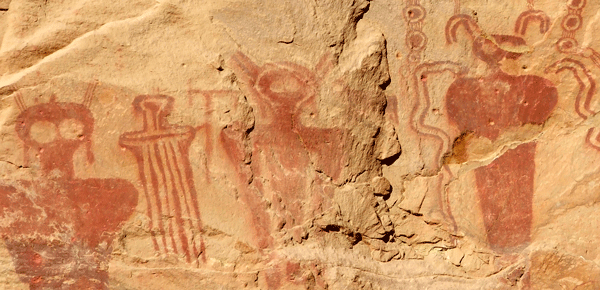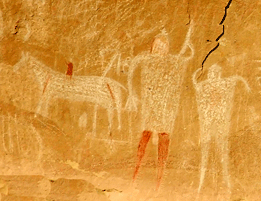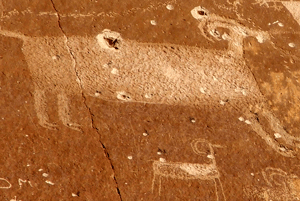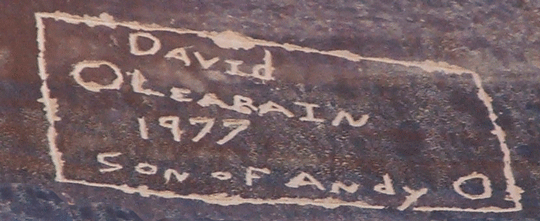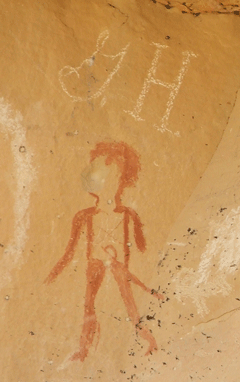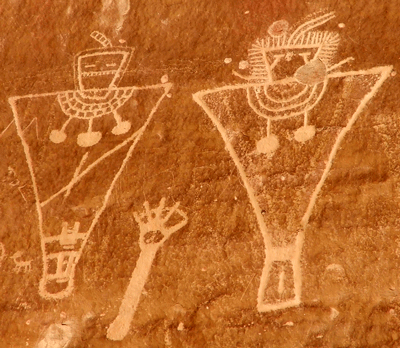 |
|
On my way to Moab, I sought out a spot that I’d flagged on the map, Sego Canyon, where there were supposed to be petroglyphs. Finding it took some doing – it’s a few miles north of the small town of Thompson Springs, with only a small sign pointing out the road that leads there. That’s on purpose – while the site is listed on the National Register of Historic Places, its address is given as “unlisted.” There is a small parking lot, a few picnic tables, a vault toilet, and a few descriptive plaques there, but I think the Bureau of Land Management, which owns the site, would much rather people just didn’t stop.
And with reason. The petroglyphs have clearly been visited by all sorts of folks in the past two hundred years, many of whom were happy to leave their on marks on the walls; their names, their own drawings in a crude style but nothing like drawings left by the natives much longer ago. The graffiti is interesting, in a way, and part of our own history, but the site is unprotected, and it would be too easy for someone to follow suit today. |
The canyon was dry and sunny when I was there, though the bed of a wash suggested that it could flood easily if conditions were right. Once there was a yard there for cattle, and further up the canyon there is apparently a ghost town, though I didn’t see it. So I guess there was something there to bring people in, thousands of years back when the first people drew shapes and forms high up on the rocks. Three groups of people came through here to leave their marks – before Anglos settled the region in the 19th century, that is. Some of the earliest drawings, which the BLM plaque put at 2000 years before the present era, show figures that look a lot like our vision of aliens – big round empty eye sockets and heads with antennae. I think this has led some people to associate petroglyphs with UFOs – at any rate, when I googled Sego Canyon, I found a website about UFOs. A later group of people drew triangular figures with very elaborate collar-like necklaces; the BLM dates them to around 600 CE, and puts them in the Fremont group. I |
